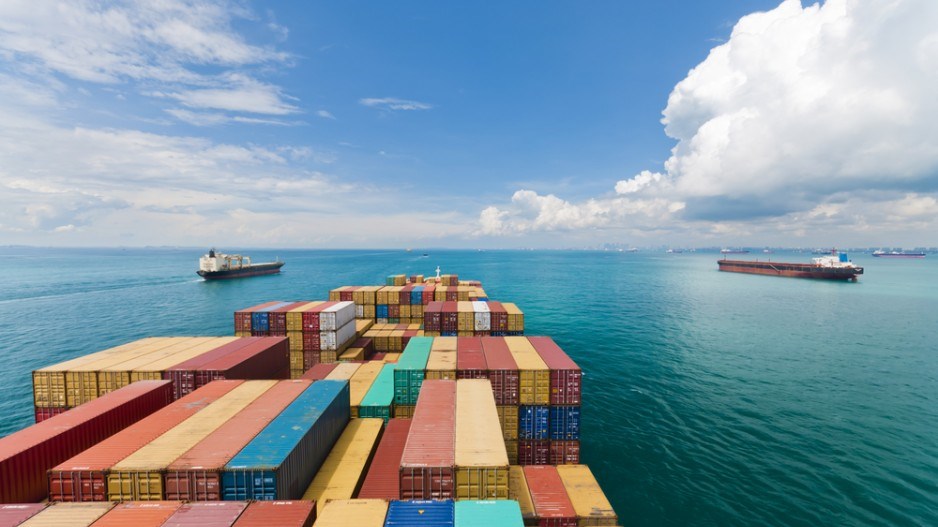China's 19,000-tonne, multi-purpose freighter Yong Sheng, owned by state-owned shipping company COSCO, made two historic marks when it docked in Rotterdam on September 11.
The Yong Sheng was the first Chinese ship to take the increasingly viable and affordable Northeast Passage route across Russia's Siberian Arctic coast to Europe, cutting up to 15 days travel time off the usual route through the Suez Canal.
It was also the first container-transporting ship to test the reliability of the Arctic route, which is now open to shipping from the beginning of July to the end of October and whose season is expected to expand if global warming continues.
Since the Russians a decade ago began promoting the passage as a safe and economic sea lane between Asia and Europe, it has been bulk carriers exclusively that have tested the waters.
The timely arrival of container traffic is usually far more important to shipping companies and their customers than are the cargoes of bulk carriers. Being able to give customers dependable delivery dates for containers is essential to the business.
The successful voyage of the Yong Sheng is encouraging other Asian shipping companies to consider using the Arctic route.
There is particular interest in South Korea, where on September 15 a tanker owned by Hyundai Glovis Co., the merchant marine arm of the Hyundai Motor Co., left the Russian Baltic Sea port of Ust-Luga with 37,000 tons of naphtha. And South Korea's main port, Busan, is beginning to promote itself as a logical Asian link in the Arctic chain to and from Europe.
Use of the Northeast Passage, which the Russians call the Northern Sea Route (NSR), has grown dramatically since 2009 when two German cargo ships first made the trip from South Korea to Rotterdam.
Russia's NSR Administration issued only four permits in 2010 for ships to use the Northeast Passage. That number grew to 46 last year, and this year, more than 430 permits have been approved, though not all those ships are expected to make the full transit. Many will be trading with Russian Siberian ports.
A clear indication of the expected growth in NSR traffic is that last month Koji Skeimizu, Secretary-General of the United Nations' International Maritime Organization, made a five-day trip through Siberian waters. His organization is drawing up the first safety rules for merchant ships using polar seas.
About five million tons of cargo are expected to be transported through the Arctic route this year. That volume is expected to triple to about 15 million tons by 2021.
All ships using the NSR must have ice-class, reinforced hulls, employ captains with Arctic experience and hire one of Russia's fleet of six nuclear-powered icebreakers as an escort.
Promoters of the route say that just the savings in fuel by cutting transit time by up to 15 days, a third of the usual 45 days or so between Asia and Europe via the Suez Canal, cover the additional costs of the Arctic route.
There are also safety considerations. While joint policing by international navies has lessened the threat of Somalian pirates, unrest in Egypt is raising concerns for ships in the Suez Canal as they pass by the Sinai Peninsula where radical Islamist groups operate. Last week a COSCO ship, Asia, was hit by a rocket-propelled grenade while going through the Suez Canal. •
Danish company banking on Northwest Passage trade route
The pioneering Danish company specializing in Arctic maritime trade, Nordic Bulk Carriers A/S, is challenging the conventional wisdom that it will be years, if not decades, before Canada's Northwest Passage is a reliable route to and from Europe.
The company's ice-class bulk carrier MV Nordic Orion left the port of Vancouver on September 6 with a cargo of 73,500 tons of metallurgical coal destined for the Finnish steel company Rautaruukki Corp.
The ship is scheduled to arrive in Finland early next month. If successful, the Nordic Orion will be only the second bulk carrier to transit the Northwest Passage. The first was in 1969.
Company managing director Christian Bonfils said in a statement the Northwest Passage route is 1,000 nautical miles (1,852 kilometres) shorter than the route through the Panama Canal.




